
Three anniversaries of 19th-century Czech architecture this year
In July 2017, we commemorate the centenary of the death of architect, professor at the Czech Technical University, Josef Schulz (born April 11, 1840 in Prague - died July 15, 1917 in Špindlerův Mlýn). In 2017, we could also celebrate the two-hundredth anniversary of the birth of Josef Niklas (born March 11, 1817 in Volyn), and we will remember the 140th anniversary of his death (died October 10, 1877 in Prague), the first professor of architecture at the Czech technical university, and Schulz's predecessor in this teaching position.
Josef Niklas –
trained at the Prague Polytechnic Institute (graduated in 1836), he worked for a certain period with the Prague builder Frenzel, a convinced creator of building Biedermeier architecture from the pre-March period (for example, he contributed to the architectural design of Vítězná třída on Újezd in the context of the quartet Kaura-Frenzel-Wolf-Tredrovský). Later, Niklas dedicated himself to the profession of architect and builder until in 1849 he came to the Prague Polytechnic Institute as an assistant to Bernard Grueber and also taught drawing at the Czech Real School; in 1864 he was appointed professor of civil engineering at the Czech branch of the bilingual (Utraquist) Prague Technical School. After the division of the university into Czech and German (1869), he became a professor of civil engineering at the Czech Technical University, where he trained several members of the National Theatre generation; from 1871 to 1873, his assistant was Antonín Wiehl. At the beginning of the academic year 1877/1878, he fell ill and soon died. Josef Schulz was called to replace him as acting professor.
As his works show, Niklas derived from Biedermeier and continued in early historicism enriched by some exotic influences. Perhaps his most significant work (in collaboration with Ignác Ullmann) is the Spanish Synagogue in Prague from 1868, characterized by Moorish inspiration; certainly, the largest was the wooden New Town Theatre behind the Horse Gate from 1858. Among the notable buildings, let us also mention the town hall in Netolice (1869), the new provostry at Vyšehrad, and the castles in Vráž and Jetřichovice; according to Niklas's design, several arts and crafts proposals and smaller architectural works were also created.
Josef Schulz –
after attending the Real School and basic studies at the Prague Polytechnic (1857-1861), he continued at the Vienna Academy under professors Siccardsburg and van der Nüll (1861-1865). He returned to Prague for an assistant position at the Polytechnic with his predecessor from the Vienna Academy, Josef Zítko. In 1868, he began a two-year study trip to Italy, and upon returning, he worked as an independent designer for several years. Possibly in connection with the economic recession following the stock market crash in Vienna in 1873, he accepted a teaching position in drawing at the goldsmith's school in Prague in 1874. After the sudden illness and departure of Josef Niklas at the beginning of the academic year 1877/1878, Schulz, based on the recommendation from the competition for the civil engineering professorship (1871), was invited to substitute and take over the teaching of architecture when a competition was called for the architecture professorship. In the following year, he was appointed professor at the Czech Technical University and remained in this position until his retirement in 1911. Over nearly three and a half decades of his teaching career, Schulz trained a number of architects across a broad range of opinions and creative span, from those who continued in established serious directions for broad layers of consumers of traditional taste to significant figures of modernity and functionalism. Among his students were later professors Rudolf Kříženecký and Antonín Balšánek, pioneer of cinematography and documentary photography Jan Kříženecký, as well as, it is true, later, one of the authors of the Trade Fair Palace, Oldřich Tyl, or Ladislav Machoň.
The scope of Josef Schulz's architectural work is impressive because for most of his creative period he taught, edited, wrote, and engaged in theoretical questions simultaneously. He was very active in the Society of Architects and Engineers of the Kingdom of Bohemia, edited the society's Reports for several years, participated in various official and working committees, and lectured on society grounds. Together with Josef Zítko, after the completion of the Rudolfinum, he was awarded the Order of Franz Joseph, and upon completing his teaching career, he was appointed a court councillor. After retiring in 1911, Josef Schulz remained active in the Czech Academy and in the administrative board of the Applied Arts Museum.
Until the floods of 2002, Schulz's estate in the Archive of Architecture and Construction at NTM provided an impressive image of his work, also partly of his life. He is recognized as the second most significant architect of the National Theatre generation after Josef Zítko; on the other hand, he is often criticized for academicism, pedantry, and a certain degree of dogmatism. He cannot be denied versatility and, unlike other active and gifted creators, also merits for educating at least two further generations of Czech architects. In his works, he utilized imaginative floor plan solutions in the spirit of the latest findings (perhaps under a certain influence of Zítko), and was able to design monumental buildings, the surroundings of which had yet to "grow" into their scale in the future. It is precisely from Schulz's hand that the designs for two significant and specialized museum buildings in Prague – the National Museum and the Museum of Applied Arts – originate.
Although Josef Schulz received a building license in Prague with an exemption from examination, he did not utilize this license; even during his independent work, he operated as a designer, not as a construction contractor. He designed across a broad spectrum of types and sizes of buildings and their parts or accessories, both for specific buildings and for various competitions, and besides that, he copied works of other authors. In his buildings, he was not afraid to use modern techniques and materials, especially iron constructions to lighten the building body. He did not shy away from using concrete either, especially when founding buildings.
The work of Josef Schulz includes theaters, concert and exhibition halls, museums, palaces, castles, romantic gardens, apartment buildings, individual residential buildings (villas), family burial places, all down to the last detail. In addition to new buildings, he also focused on the reconstruction of castles, historical palaces, and churches. The vast majority of Schulz's buildings bear the stylistic marks of scientifically elaborate neo-Renaissance, though at the end of his creative career, he also designed two neo-Gothic churches; in reconstructions, he modified Baroque or Rococo buildings. A specific place in his work occupies the completion and restoration of a castle, more of a small castle, in Stránov on a promontory above the Jizera Valley near Mladá Boleslav. From the perspective of heritage care in the context of the early 21st century, his reconstructions are not among the most delicate, as instead of conservation methods that preserve the highest possible informational value of the work, he accommodated the builder's requirements, compliance with contemporary aesthetic criteria, and demands for the restoration of monuments.
Josef Schulz died on July 15, 1917, a quarter of a year after reaching 77 years of age, during a summer stay in Špindlerův Mlýn, and he is buried in Vyšehrad Cemetery.
Josef Niklas –
trained at the Prague Polytechnic Institute (graduated in 1836), he worked for a certain period with the Prague builder Frenzel, a convinced creator of building Biedermeier architecture from the pre-March period (for example, he contributed to the architectural design of Vítězná třída on Újezd in the context of the quartet Kaura-Frenzel-Wolf-Tredrovský). Later, Niklas dedicated himself to the profession of architect and builder until in 1849 he came to the Prague Polytechnic Institute as an assistant to Bernard Grueber and also taught drawing at the Czech Real School; in 1864 he was appointed professor of civil engineering at the Czech branch of the bilingual (Utraquist) Prague Technical School. After the division of the university into Czech and German (1869), he became a professor of civil engineering at the Czech Technical University, where he trained several members of the National Theatre generation; from 1871 to 1873, his assistant was Antonín Wiehl. At the beginning of the academic year 1877/1878, he fell ill and soon died. Josef Schulz was called to replace him as acting professor.
As his works show, Niklas derived from Biedermeier and continued in early historicism enriched by some exotic influences. Perhaps his most significant work (in collaboration with Ignác Ullmann) is the Spanish Synagogue in Prague from 1868, characterized by Moorish inspiration; certainly, the largest was the wooden New Town Theatre behind the Horse Gate from 1858. Among the notable buildings, let us also mention the town hall in Netolice (1869), the new provostry at Vyšehrad, and the castles in Vráž and Jetřichovice; according to Niklas's design, several arts and crafts proposals and smaller architectural works were also created.
Josef Schulz –
after attending the Real School and basic studies at the Prague Polytechnic (1857-1861), he continued at the Vienna Academy under professors Siccardsburg and van der Nüll (1861-1865). He returned to Prague for an assistant position at the Polytechnic with his predecessor from the Vienna Academy, Josef Zítko. In 1868, he began a two-year study trip to Italy, and upon returning, he worked as an independent designer for several years. Possibly in connection with the economic recession following the stock market crash in Vienna in 1873, he accepted a teaching position in drawing at the goldsmith's school in Prague in 1874. After the sudden illness and departure of Josef Niklas at the beginning of the academic year 1877/1878, Schulz, based on the recommendation from the competition for the civil engineering professorship (1871), was invited to substitute and take over the teaching of architecture when a competition was called for the architecture professorship. In the following year, he was appointed professor at the Czech Technical University and remained in this position until his retirement in 1911. Over nearly three and a half decades of his teaching career, Schulz trained a number of architects across a broad range of opinions and creative span, from those who continued in established serious directions for broad layers of consumers of traditional taste to significant figures of modernity and functionalism. Among his students were later professors Rudolf Kříženecký and Antonín Balšánek, pioneer of cinematography and documentary photography Jan Kříženecký, as well as, it is true, later, one of the authors of the Trade Fair Palace, Oldřich Tyl, or Ladislav Machoň.
The scope of Josef Schulz's architectural work is impressive because for most of his creative period he taught, edited, wrote, and engaged in theoretical questions simultaneously. He was very active in the Society of Architects and Engineers of the Kingdom of Bohemia, edited the society's Reports for several years, participated in various official and working committees, and lectured on society grounds. Together with Josef Zítko, after the completion of the Rudolfinum, he was awarded the Order of Franz Joseph, and upon completing his teaching career, he was appointed a court councillor. After retiring in 1911, Josef Schulz remained active in the Czech Academy and in the administrative board of the Applied Arts Museum.
Until the floods of 2002, Schulz's estate in the Archive of Architecture and Construction at NTM provided an impressive image of his work, also partly of his life. He is recognized as the second most significant architect of the National Theatre generation after Josef Zítko; on the other hand, he is often criticized for academicism, pedantry, and a certain degree of dogmatism. He cannot be denied versatility and, unlike other active and gifted creators, also merits for educating at least two further generations of Czech architects. In his works, he utilized imaginative floor plan solutions in the spirit of the latest findings (perhaps under a certain influence of Zítko), and was able to design monumental buildings, the surroundings of which had yet to "grow" into their scale in the future. It is precisely from Schulz's hand that the designs for two significant and specialized museum buildings in Prague – the National Museum and the Museum of Applied Arts – originate.
Although Josef Schulz received a building license in Prague with an exemption from examination, he did not utilize this license; even during his independent work, he operated as a designer, not as a construction contractor. He designed across a broad spectrum of types and sizes of buildings and their parts or accessories, both for specific buildings and for various competitions, and besides that, he copied works of other authors. In his buildings, he was not afraid to use modern techniques and materials, especially iron constructions to lighten the building body. He did not shy away from using concrete either, especially when founding buildings.
The work of Josef Schulz includes theaters, concert and exhibition halls, museums, palaces, castles, romantic gardens, apartment buildings, individual residential buildings (villas), family burial places, all down to the last detail. In addition to new buildings, he also focused on the reconstruction of castles, historical palaces, and churches. The vast majority of Schulz's buildings bear the stylistic marks of scientifically elaborate neo-Renaissance, though at the end of his creative career, he also designed two neo-Gothic churches; in reconstructions, he modified Baroque or Rococo buildings. A specific place in his work occupies the completion and restoration of a castle, more of a small castle, in Stránov on a promontory above the Jizera Valley near Mladá Boleslav. From the perspective of heritage care in the context of the early 21st century, his reconstructions are not among the most delicate, as instead of conservation methods that preserve the highest possible informational value of the work, he accommodated the builder's requirements, compliance with contemporary aesthetic criteria, and demands for the restoration of monuments.
Josef Schulz died on July 15, 1917, a quarter of a year after reaching 77 years of age, during a summer stay in Špindlerův Mlýn, and he is buried in Vyšehrad Cemetery.
The English translation is powered by AI tool. Switch to Czech to view the original text source.
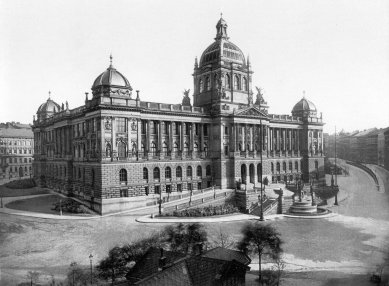
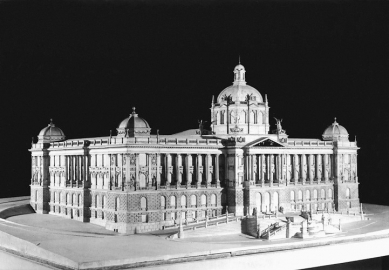
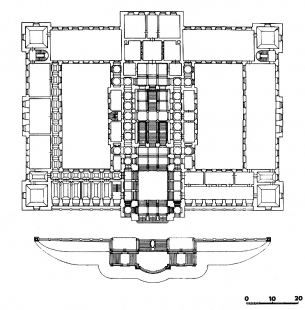

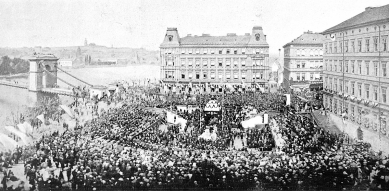
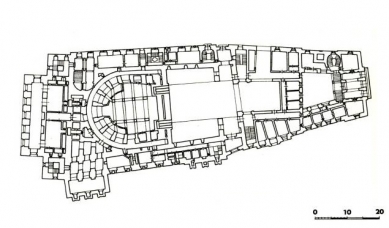
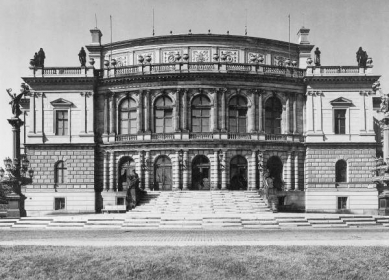
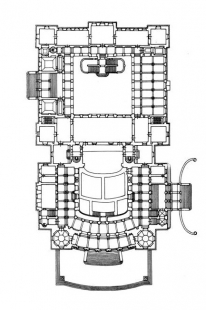
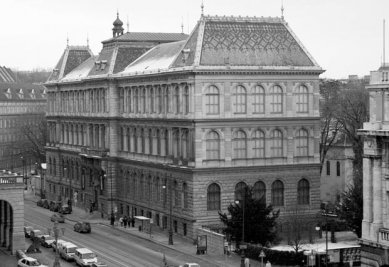
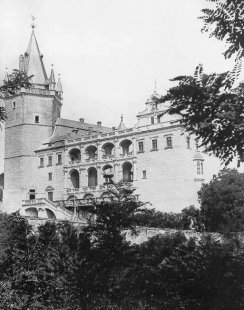
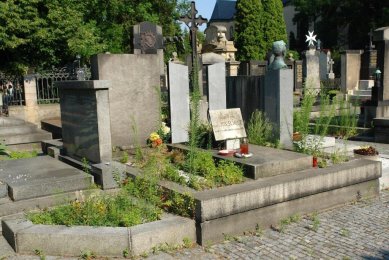
0 comments
add comment












